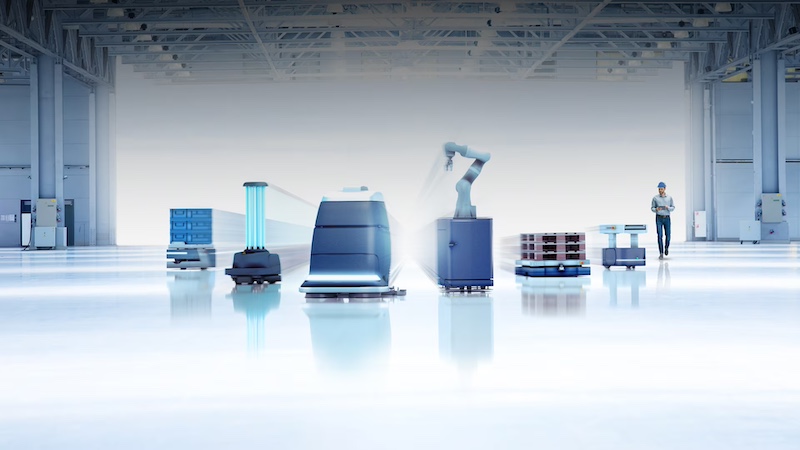The rapidly expanding use of automation has generated an array of technologies and applications; creating a critical need for high performance solutions for autonomous mobile robots (AMRs) and autonomous guided vehicles (AGVs) that can adapt to different scenarios.
Industry leader SICK has developed its modular series of sensors to do just this – meeting and exceeding industry needs for adaptability, safety and precision to provide long-term solutions.
SICK’s modular sensor technology enables manufacturers and users of mobile robots to select precisely the modules they require and combine them to create the ideal solution for their application.
SICK’s modular sensor solutions allow you to:
Adapt your mobile robot to any unique situation with ease.
A modular system of sensors allows for individual modules to be easily customised, combined or changed without having to redesign or reconfigure the whole system.
This saves time and effort when developing and designing, expanding the ways in which mobile robots can be adapted and used.
Enjoy the ease of customisation, through Plug-and-Play.
SICK’s components are simple to integrate, customise and change, allowing mobile robots to be adapted to specific, individual requirements.
Each sensor device is designed and standardised with easy integration in mind. Plug-and-Play eliminates the need for technical knowledge, manual configuration and minimises user intervention.
This versatile, scalable system can bolster many aspects of mobile robots’ performance, some of which are outlined below.
Enhanced localisation and precise navigation
Mobile robots must perform highly precise, complex movements in very different – and sometimes dangerous – environments. SICK’s sensors and LiDAR technology can enhance the localisation and navigation of mobile robots.
The Optical Line Sensor (OLS) and Magnetic Line Sensor (MLS) offer precise navigation through line-based tracking. They use luminescent or magnetic tapes on the floor, that are unaffected by light and dirt, to guide mobile robots around factories and warehouses.
Additionally, SICK’s 2D and 3D LiDAR technology can detect any sharp bends in the environment, while the LiDAR-LOC application software seamlessly links and exchanges information with other sensors – ensuring the highest accuracy for mobile robot navigation.
Safety rated 3D time-of-flight cameras? SICK did it first
SICK blazed a trail with the world’s first safety rated 3D, time-of-flight camera. Coupled with SICK’s 2D and 3D image processing, it provides completely new, adaptive solutions for automation applications that control positioning, environmental perception, and robot guidance.
SICK’s 3D cameras increase safety through:
- Ensuring high levels of safety for human workers, such as preventing collisions between forklifts or identifying safety hazards such as cable clutter.
- Low latency, meaning that the computing system can respond to any stimuli or danger in the environment with minimal delay. Access to real-time data is vital in dangerous and rapidly changing environments.
- Quick and precise detection of objects and far-ranging distance measurements. 3D cameras are even able to detect objects beyond the protective layer of a safety laser.
- Operating efficiently in low light or near darkness.
Modularity is the key advantage
Matt van den Braak, Robotics and Mobile Platforms Sales Specialist, says: “We realised that the answer isn’t a one-size-fits all solution. Rather, what was needed was a modular system – a chain of individualised, standardised sensors to solve complex challenges and suit different environments.”
“With automation growing so rapidly and creating the opportunity to bridge gaps within industrial and logistic operations, our modular sensor range ensures humans and robots can operate seamlessly in factories, warehouses and across industrial sites.”
There is no single mobile robot or sensor that can address the many challenges this industry faces, both now and into the future. But universal solutions provider SICK is using its expertise and innovation to develop a modular range of sensors that can be combined to suit each task and application.
Learn more here about the vast range of possibilities and capabilities SICK’s modular sensor technology brings to mobile robotics.
And read more in SICK’s new eGuide on the subject: Evolution of mobile robots through modular sensor solutions.
[ad_2]
Source link



